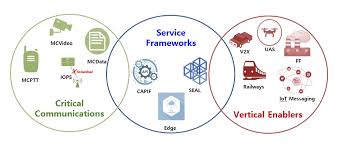Understanding vEPC: The Virtualized Evolved Packet Core Explained
telcomatraining.com – As the demand for faster and more efficient mobile networks increases, network operators are transitioning from traditional hardware-based infrastructures to virtualized solutions. One of the most critical advancements in this transition is the Virtualized Evolved Packet Core (vEPC). This technology enables telecom providers to manage and optimize mobile data traffic with greater flexibility, scalability, and cost-efficiency. In this article, we will explore what vEPC is, its key components, advantages, and how it is transforming modern telecommunications.
What is vEPC?
The Virtualized Evolved Packet Core (vEPC) is a cloud-based, software-defined version of the traditional Evolved Packet Core (EPC) used in LTE and 5G networks. EPC is responsible for handling data traffic, network connectivity, and mobility management in mobile networks. Unlike conventional EPC, which relies on dedicated hardware, vEPC runs on generic cloud infrastructure using Network Functions Virtualization (NFV) and Software-Defined Networking (SDN) principles.
Key Components of vEPC
vEPC consists of the following core network functions, each virtualized to improve network agility:
- Mobility Management Entity (MME) – Handles user authentication, session management, and mobility tracking.
- Serving Gateway (SGW) – Routes and forwards user data packets between the mobile device and the internet.
- Packet Data Network Gateway (PGW) – Manages data connectivity between the mobile network and external packet data networks.
- Home Subscriber Server (HSS) – Stores user profiles and authentication data.
- Policy and Charging Rules Function (PCRF) – Implements policies for data prioritization, quality of service (QoS), and charging mechanisms.
Advantages of vEPC
1. Cost Efficiency
By replacing expensive, proprietary hardware with virtualized software running on commercial off-the-shelf (COTS) servers, vEPC reduces capital expenditures (CapEx) and operational expenditures (OpEx).
2. Scalability and Flexibility
Operators can dynamically allocate resources based on traffic demands, ensuring efficient network usage and seamless scaling.
3. Faster Deployment
vEPC enables quick deployment of new network functions and services, reducing the time required to launch new mobile services.
4. Improved Network Performance
By leveraging cloud-native architectures, vEPC enhances network performance, reduces latency, and improves service reliability.
5. Support for 5G and Edge Computing
vEPC is a foundational technology for 5G networks, enabling Multi-access Edge Computing (MEC) for ultra-low latency applications like IoT and autonomous vehicles.
How vEPC is Transforming Telecommunications
vEPC is revolutionizing the way telecom operators build and manage mobile networks. Some key transformations include:
- Enhanced User Experience: With lower latency and optimized traffic management, users experience faster and more stable mobile connections.
- Network Automation: Through AI and machine learning integration, vEPC enables automated network operations, reducing human intervention.
- Private LTE and Enterprise Networks: Enterprises are adopting vEPC for private LTE networks, ensuring secure and customized connectivity for industrial applications.
- IoT Expansion: With scalable and cost-efficient connectivity, vEPC supports the growing number of IoT devices, paving the way for smart cities and Industry 4.0.
Conclusion
The shift from traditional EPC to Virtualized Evolved Packet Core (vEPC) represents a crucial step toward more efficient, scalable, and cost-effective mobile networks. As 5G adoption accelerates, vEPC will play a pivotal role in ensuring seamless connectivity, supporting emerging technologies, and enabling new business models in the telecom industry. By embracing vEPC, network operators can future-proof their infrastructure and deliver enhanced services to users worldwide.
With its numerous advantages and transformative capabilities, vEPC is undoubtedly a game-changer in modern telecommunications. As the demand for high-speed, low-latency networks grows, the adoption of vEPC will continue to expand, shaping the future of mobile connectivity.







